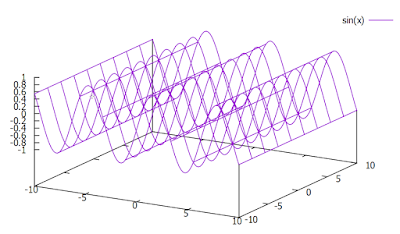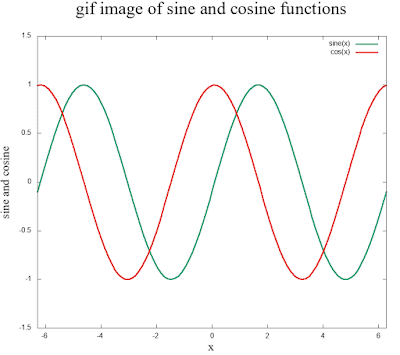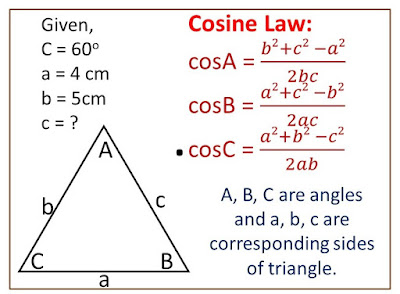what is an equation | what is trigonometric equation | techniques of solving trigonometric equations | Knowledge of Physics
Solving a mathematical problem is not an easy task. You need to have a lot of background knowledge to solve problems. If you a student of Physics, you need to solve many types of problem using mathematical relations. To be strong in Physics, you need to make yourself strong mathematics as well.
In this post, you will learn about the following topics:
- What is equation ?
- What is trigonometric equation
- What the techniques or Steps of Solving Trigonometric equations?
- Problems with Solutions of different type of trigonometric equations
Learn more about Trigonometric ratios and their formulae from HERE.
1. What is an Equation ?
The mathematical relation of the form ax + bx + c = 0 which is true for certain values of given variable x, is called equation.
For example, 2x+2 = 1 is an equation, which true only for
`\rightarrow` 2x+2 =1
or, 2x = 1-2
or, 2x = - 1
`\therefore` `x = \frac{-1}{2}`
Thus given equation is true only for `x = \frac{-1}{2}`. This means calculated value of x satisfies the given equation.
Another form of equation is quadratic equation of the form
`ax^2 + bx +c = 0`
You might have leant it in School level.
Solution or the value of x for this equation is given as
`x = \frac{- b \pm \sqrt{b^2 - 4ac}}{2a}` ---------(i)
For example,
Let the quadratic equation be,
`x^2 - 3x +2 = 0` --------(ii)
If given quadratic equation is very hard to factorize, then you can use formula (i) to find the value of variable x. But, if it is easier to factorize, then can factorize it as follows:
`\rightarrow` `x^2 -3x +2 = 0`
or, `x^2 - 2x -x + 2 = 0 `
or, `x(x-2) - 1(x-2) = 0`
or, `(x - 2)(x - 1) = 0`
Either, `x - 2 = 0`
OR, `x - 1 = 0`
`\therefore` `x= 1, 2`.
Thus `x = 1, 2`, which are the required solution of given quadratic equation (ii). You can get same soution by using the formula (i). For which a = 1, b = -3, c = 2. Try it !
2. Trigonometric Equation
The equation that contains trigonometric ratios such as `sin2\theta - cos\theta = 0` as variable and is true for certain values of angle (`\theta`) given in the equation is called trigonometric equation. The values of trigonometric ratios repeat on certain intervals for the increase or decrease of angle. This is why trigonometric ratios are also called periodic ratios.
Solving given equation:
`sin2\theta - cos\theta = 0`
or, `sin2\theta = cos\theta`
or, `sin2\theta = sin(90^o \pm \theta)`
Both '+' and '-' signs are taken on right hand side. It is because, by Quadrant rule, we know that sine is positive on both of first(`0^o\le\theta\le90^o`) and second(`90^o\le\theta\le180^o`) quadrants.
Either, `sin2\theta = sin(90^o + \theta) ------(i)`
Or, `sin2\theta = sin(90^o - \theta) ------(ii)`
From (i),
`sin2\theta = sin(90^o + \theta)`
or, `2\theta = 90^o + \theta`
or, `2\theta - \theta = 90^o`
`\therefore` `\theta = 90^o`.
From (ii)
`sin2\theta = sin(90^o - \theta)`
or, `2\theta = 90^o - \theta`
or, `3\theta = 90^o`
or, `\theta = \frac{90^o}{3} = 30^o`
`\therefore` `\theta = 30^o`.
Hence, the solutions for given trigonometric equation are `90^0` and `30^o`.
For example:
If `sin\theta = \frac{\sqrt{3}}{2}`, then this equation is true only for `\theta = 60^o` and `120^o`. It is because sine of other values except `60^o` and `120^o`, can not generate `\frac{\sqrt{3}}{2}`.
Note: Keep in Mind
What is different between an identity relation and an equation ?
An identity relation is a mathematical equation which is true for all values of the variable involved in the relation. However, an equation is true only for certain values of variable involved in the equation.
For example:
Consider two equations:
`sin^2\theta + cos^2\theta = 1` ----(a) and
`2sin\theta - \sqrt{3} = 0 ` ------(b)
Let the values of angle `\theta` be `0^o, 30^o, 45^o, 60^0, 90^o, 120^o` and `180^o`, then
In equation (a),
For `\theta = 0^o`,
`sin^{2}0 + cos^{2}0 = 1`
or, `0 + 1 = 1`
`\therefore` 1 =1, which is true.
For `\theta = 30^o`,
`sin^{2}30^o + cos^{2}30^o = 1`
or, `(\frac{1}{2})^2 + (\frac{\sqrt{3}}{2})^2 = 1`
or, `\frac{1}{4} + \frac{3}{4} = 1`
or, `\frac{1 + 3}{4} = 1`
or, `\frac{4}{4} = 1`
`\therefore` 1 = 1, which is again true.
Similarly, equation (a) is true for all given values of `\theta`. Check Yourself once 😊 ! It is also true for all other angles, such as `1^o, 2^o, 3^o, 4^o` and so on. So, equation (a) is an identity.
But for equation (b),
let `\theta = 0^o`,
`2 sin0^o - \sqrt{3} = 0`
or, `2 \times 0 - \sqrt{3} = 0`
or, `0 - \sqrt{3} = 0`
`\therefore` `\sqrt{3} = 0`, which is not true.
Again, let `\theta = 60^0`,
`2 sin60^o - \sqrt{3} = 0`
or, `2 \frac{\sqrt{3}}{2} - \sqrt{3} = 0`
or, `\sqrt{3} - \sqrt{3} = 0`
`\therefore` `0 = 0`, which is true.
Thus equation (b) is true for only `60^o` of given angles. It is not true for other values of `\theta`. Thus, equation (b) is just an equation, not an identity. Thus, all identities can be equations, but all equations can't be identities. Keep this difference of identity and equation in your mind !
3. Techniques/Steps of Solving Trigonometric Equation.
Suppose, given trigonometric equation, `0 \leq \theta \leq 360^0` be
`2sin^2\theta + 3 cos\theta = 3` ------(1)
Now, you have to follow the following steps to solve trigonometric equation (1).
a) Bring all terms to Left Hand Side (LHS) making Right Hand Side (RHS) zero. That is,
`2sin^2\theta + 3cos\theta = 3`
`\therefore` `2 sin^2\theta + 3cos\theta - 3 = 0` --------(2)
b) Factorize the expression of LHS of equation from (2) making a single factor containing single trigonometric ratio. That is,
`2sin^2\theta + 3cos\theta - 3 = 0`
or, `2 (1 - cos^2\theta) +3cos\theta - 3 = 0`
or, `2 - 2cos^2\theta + 3cos\theta - 3 = 0`
or, `-2cos^2\theta + 3cos\theta -1 = 0`
or, `2cos^\theta - 3cos\theta + 1 = 0`
or, `2cos^2\theta - 2 cos\theta - cos\theta + 1 = 0`
or, `2 cos\theta (cos\theta - 1) -1 (cos\theta - 1) = 0`
`\therefore` `(2 cos\theta - 1)(cos\theta - 1) = 0` ------(3)
c) LHS on equation (3) contains two factors `(2cos\theta - 1)` and `(cos\theta - 1)`. Equate each factor to zero. That is
Either, `2 cos\theta - 1 = 0` --------(4)
OR, `cos\theta - 1 = 0` --------(5)
d) Rules of Finding values of angles (`\theta`):
i) At first, identify the quadrant on which the least positive value of angle (`\theta`) falls. For this, you have to use 'AS The Choice' or 'ASTC' rule.
Fig. 1 Quadrant Rule for value of Trigonometric Ratios
ii) Find the first least positive value of angle of trigonometric ratios in quadrant I, for given relation.
That is, from (4) and (5), you have
`2cos\theta -1 = 0`
`\rightarrow` `cos\theta = \frac{1}{2}`
As all trigonometric ratios are positive in quadrant I, Then using Table.2, you get
`\theta = cos^{-1}(\frac{1}{2}) = 60^o`.
Also,
`cos\theta - 1 = 0`
`\rightarrow` `cos\theta = 1`
`\rightarrow` `\theta = cos^{-1}(1) = 0^o`.
These are the solutions in first quadrant.
iii) After `\theta` is found in quadrant I, find other values in remaining quadrants using quadrant rule as
`\theta` in Quadrant II = `180^o - \theta`
`\theta` in Quadrant III = `180^o + \theta`
`\theta` in Quadrant IV = `160^o - \theta`
Find angle more than `360^o` just using `360^o + \theta` and so on.
Now,
`cos\theta` is positive in Quadrant I and IV. Since value of `cos\theta` in both equations (4) and (5) are positive So, you need to find values of `\theta` here in only quadrant I and IV.
Since, `cos\theta = \frac{1}{2}`, `cos\theta = 1` and values of `\theta` in quadrant I are `60^o` and `0^o` respectively. Then
angle in quadrant IV = `360^o - \theta = 360^o - 60^o = 300^o`
and angle in quadrant IV = `260^o - 0^o = 360^o`.
`\therefore` `\theta = 0^o, 60^o, 300^o` and `360^o`.
Hence, the solution for equation (1) are `0^o, 60^o, 300^o` and `360^o` for the range `0^o \leq \theta \leq 360^o`.
This is how you can solve trigonometric equations.
4. Problems and Solution of some Important Trigonometric Equations
Problem 1: Solve the equation for `0^o \leq \theta 360^o`.
`sec\theta . tan\theta = \sqrt{2}`.
Solution:
Given trigonometric equation is
`sec\theta . tan\theta = \sqrt{2}` -----(a)
or, `\frac{1}{cos\theta} . \frac{sin\theta}{cos\theta} = \sqrt{2}`
or, `sin\theta = \sqrt{2} cos^2\theta = 0`
or, `sin\theta - \sqrt{2} cos^2\theta = 0`
or, `sin\theta - \sqrt{2} (1 - sin^2\theta) = 0`
or, `sin\theta - \sqrt{2} + \sqrt{2} sin^2\theta = 0`
or, `\sqrt{2} sin^2\theta + sin\theta - \sqrt{2} = 0`
or, `\sqrt{2} sin^2\theta + 2 sin\theta - sin\theta - \sqrt{2} = 0`
or, `\sqrt{2} sin\theta (sin\theta - \sqrt{2}) - 1 (sin\theta + \sqrt{2}) = 0`
or, `(\sqrt{2} sin\theta - 1)(sin\theta + \sqrt{2}) = 0`
Either, `\sqrt{2} sin\theta - 1 = 0` ----(b)
Or, `sin\theta + \sqrt{2} = 0 ` ------(c)
From (b),
`\sqrt{2} sin\theta -1 = 0`
or, `sin\theta = \frac{1}{\sqrt{2}}`
or, `\theta = sin^{-1}(\frac{1}{\sqrt{2}}) = 45^0` in first quadrant.
Since, `sin\theta` in (b) has positive value `\frac{+ 1}{\sqrt{2}}`, then by using quadrant rule of determination of angle, `sin\theta` is also valid in second quadrant.
Thus, angle in second quadrant = `180^o - \theta = 180^o - 45^0 = 135^o`.
Also, from (c),
`sin\theta + \sqrt{2} = 0`
or, `sin\theta = - \sqrt{2}`
Since, `\sqrt{2} \gt 1`, then `- \sqrt{2} \lt -1`.
But `-1 \leq sin\theta \leq 1`.
Therefore, (c) is not valid for the solution.
Hence, required solution of given trigonometric equation (a) are `45^o` and `135^o`.
Problem 2: Solve the following equation for `0^o \leq \theta \leq 180^o`.
`sin2\theta + cos\theta = 0`.
Solution:
Given trigonometric equation is
`sin2\theta + cos\theta = 0` -----(a)
or, `2 sin\theta . cos\theta + cos\theta = 0`
or, `cos\theta (2 sin\theta + 1) = 0`
Either, `cos\theta = 0` -----(b)
Or, `2 sin\theta + 1 = 0` -----(c)
From (b)
`cos\theta = 0`
`\rightarrow` `\theta = cos^{-1}(0) = 90^o`.
Also from (c),
`2 sin\theta + 1 = 0`
`\rightarrow` `sin\theta = \frac{-1}{2}`
Here `sin\theta` has negative value.
However, `\theta = sin^{-1}(\frac{1}{2}) = 30^o`.
`sin\theta` is negative only in quadrant III and IV. But by given condition, `0^o \leq \theta 180^o`, which allows us to find `\theta` only in quadrants I and II. So, it is not necessary to find `\theta` in this case.
Hence, the required solution of equation (a) is `90^o`











Comments
Post a Comment